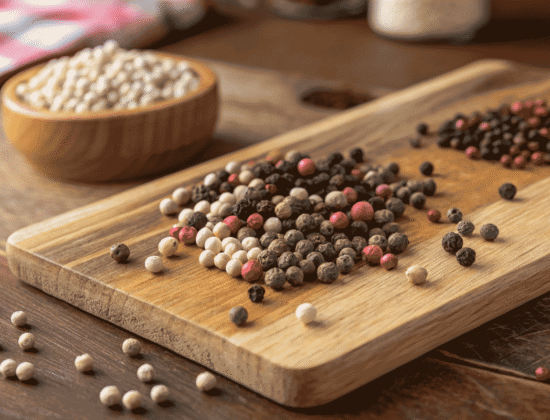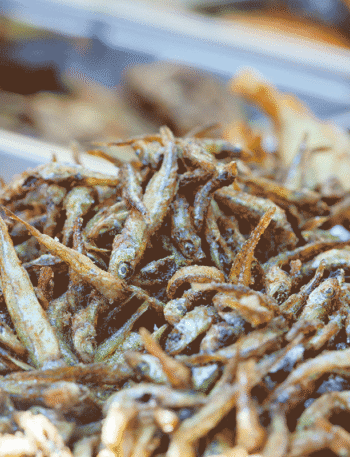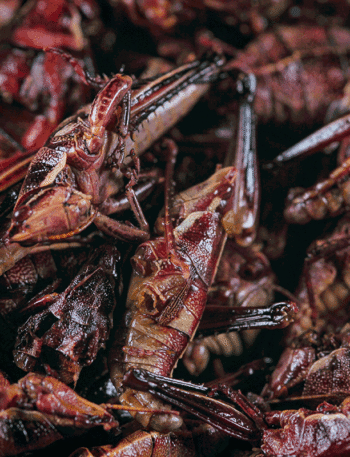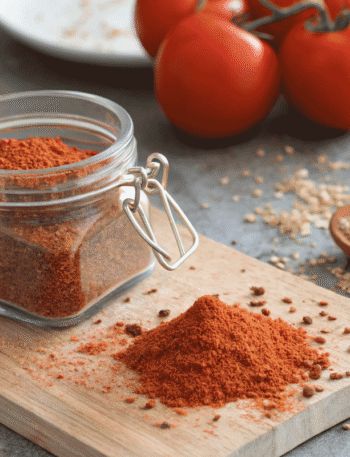If you think pepper is just the dusty black stuff in your table shaker, you’re in for a surprise. Peppercorns come in different colors, and each one has its own flavor, history, and best use. Black, white, green, and pink peppercorns all play unique roles in cooking. Learning about them can add variety to your meals and take your kitchen skills up a notch.
Let’s dig into the world of peppercorns and find out what makes each one special.
What Are Peppercorns?
Peppercorns are the dried berries of a tropical vine called Piper nigrum. Depending on how they are harvested and processed, the same berry can become black, white, or green peppercorns. Pink peppercorns are the outlier. They come from a different plant but look similar and are used in similar ways.
Pepper has been one of the most traded spices in human history. In ancient times, it was so valuable it was used to pay taxes and rent. Today, it’s one of the most common seasonings on Earth, but few people know much about the differences between the types.
Black Peppercorns
Black peppercorns are the most common type. They come from berries that are picked when nearly ripe and then dried until they shrivel and darken. This process brings out their bold flavor and strong aroma.
The taste of black pepper is sharp, warm, and slightly spicy. It’s what most of us think of when we imagine the taste of pepper.
Black pepper has been used for thousands of years. Ancient Greeks and Romans imported it from India, and during the Middle Ages, it was so expensive it was called black gold.
You’ll find black pepper in almost every cuisine. It’s a staple in dishes like cacio e pepe, black pepper chicken, and pepper-crusted steaks. It’s also essential in spice blends like garam masala and Creole seasoning.
Use whole black peppercorns in a grinder for the freshest flavor. If you’re cooking a stew or sauce, you can toss in whole peppercorns to add background heat without overpowering the dish.
White Peppercorns
White peppercorns come from the same berries as black pepper, but they’re processed differently. After ripening on the vine, the berries are soaked in water to remove the outer skin. What’s left is the pale inner seed.
This gives white pepper a different taste. It’s more earthy and less sharp than black pepper. Some people say it has a slightly fermented aroma, but that softens when it’s cooked.
White pepper is often used in French and Chinese cooking. In creamy sauces, mashed potatoes, and white soups, white pepper is preferred because it blends in without leaving black specks.
You’ll also find it in classic dishes like velouté sauce and potato leek soup. In Chinese cuisine, it’s key in hot and sour soup and congee.
White pepper is a great choice when you want subtle heat in light-colored dishes. Just be careful not to overdo it, as its flavor is more concentrated than black pepper.
Green Peppercorns
Green peppercorns are picked early, while the berries are still unripe. To keep them from turning black, they are preserved in brine, freeze-dried, or air-dried quickly. This helps them hold onto their green color and fresh, slightly herbal taste.
They are much milder than black pepper, with a fresh, almost grassy flavor. Green peppercorns are popular in Thai cuisine, where they are sometimes used fresh and still on the stem. Dishes like Thai green curry or jungle curry often feature them for their fragrant pop of flavor.
In French cooking, green peppercorns are famously used in steak au poivre vert, a dish where a creamy sauce made with green peppercorns coats a perfectly cooked steak.
You can find green peppercorns in jars packed in brine, or dried in spice jars. Brined peppercorns are soft and can be mashed into sauces or spreads. Dried green peppercorns should be soaked briefly in water before using, especially if you want to soften them for cooking.
Try using green peppercorns in pan sauces, compound butters, or even over grilled chicken. They add flavor without too much heat and work well in dishes that need a gentle spice.
Pink Peppercorns
Pink peppercorns are not true peppercorns. They come from a different plant altogether, usually Schinus molle or Schinus terebinthifolia, both of which grow in South America.
Despite the name, pink peppercorns are more closely related to cashews and mangoes than to black pepper. They are light, fruity, and a little sweet, with just a touch of heat.
These peppercorns are often used in gourmet pepper blends for their bright color and unique flavor. They’re soft and fragile, so they don’t grind well in regular pepper mills. It’s better to crush them lightly with the side of a knife or grind them in a spice grinder.
Pink peppercorns are excellent in salads, seafood dishes, and even desserts. You might see them scattered over goat cheese crostini, mixed into chocolate bark, or stirred into a vinaigrette. They also work well in cocktails, where their floral notes add depth.
One caution: since pink peppercorns are related to tree nuts, they can cause allergic reactions in people who are sensitive to cashews. Always check before serving them to others.
Comparing the Four
Here’s a quick side-by-side to help you decide which peppercorn to use and when
| Type | Flavor Profile | Best Used In | Spice Level | Dish Examples |
|---|---|---|---|---|
| Black | Bold, spicy, warm | Universal seasoning for meats, sauces, vegetables | Medium-High | Cacio e pepe, steak rubs, black pepper tofu |
| White | Earthy, sharp, slightly funky | Creamy or light-colored dishes, Asian soups | Medium | Hot and sour soup, mashed potatoes, velouté |
| Green | Mild, fresh, herbal | Cream sauces, brined condiments, Thai curries | Mild | Steak au poivre, Thai green curry |
| Pink | Fruity, floral, lightly sweet | Salads, seafood, desserts, cocktails | Very Mild | Goat cheese salad, chocolate bark, gin drinks |
Each of these peppercorns brings something different to the table. You can even mix them in a single dish to get layers of flavor and color.
Tips for Buying and Storing
Whole peppercorns stay fresh much longer than ground pepper. If you can, buy them whole and grind them as needed.
Store peppercorns in an airtight container in a cool, dark place. Avoid keeping them near the stove, where heat and steam can cause them to lose flavor quickly.
If you want to try them all, look for mixed peppercorn blends that include black, white, green, and pink. These look beautiful in a clear grinder and give you a range of flavors in one shake.
Wrapping It Up
Peppercorns do more than just add spice. They bring character to food and can completely change the taste of a dish depending on which type you use. Black, white, green, and pink peppercorns all deserve a place in your spice cabinet.
Next time you’re cooking, try using a different kind of pepper than you normally would. You might find that white pepper adds the perfect touch to your creamy soup, or that pink peppercorns turn a basic salad into something special.
Understanding these small but powerful spices helps you cook with more confidence and creativity. And once you’ve tasted the difference, you might never go back to that plain old pepper shaker again.




